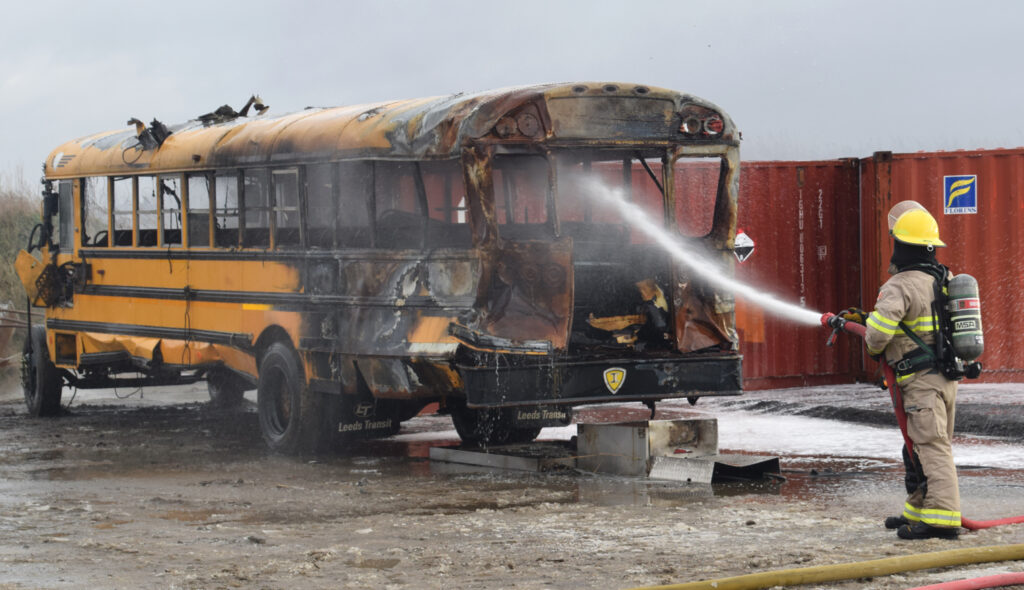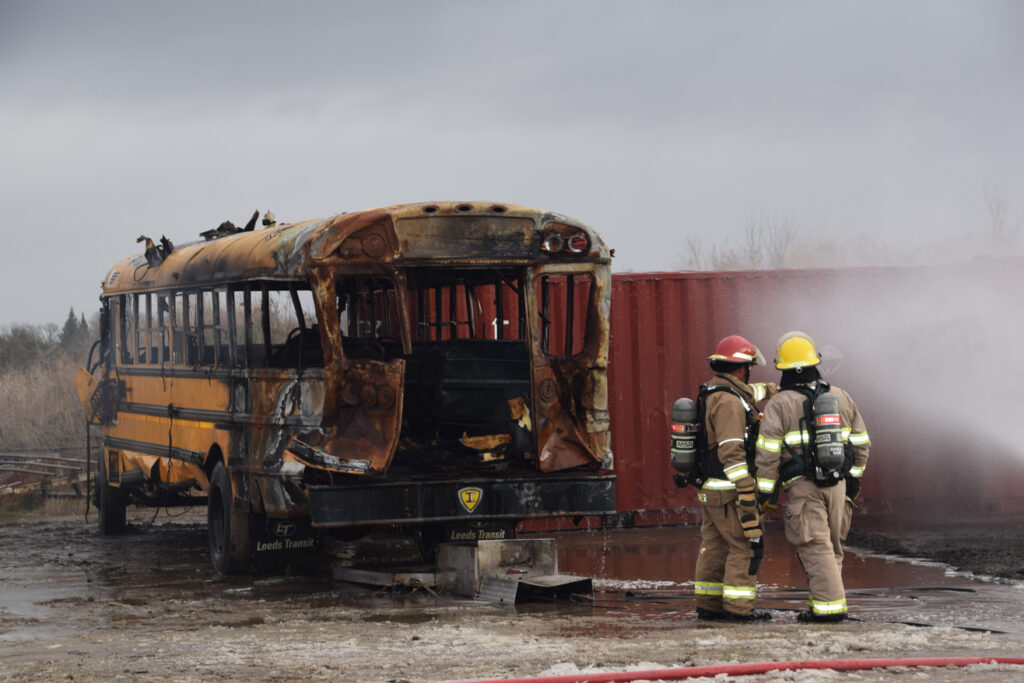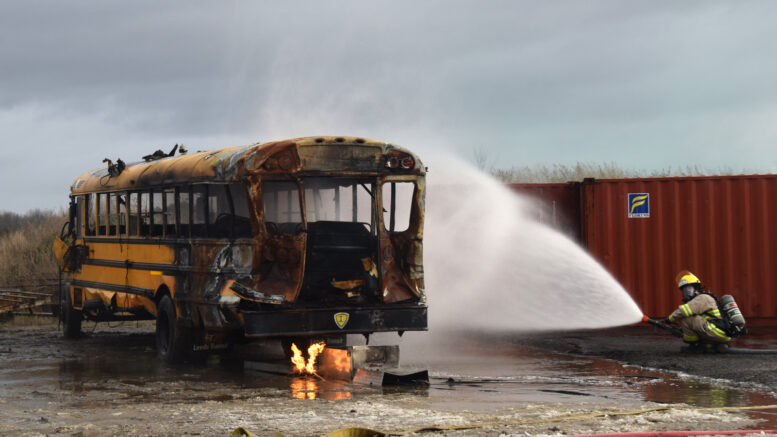Adam Prudhomme
Editor
Emergency crews arrived on scene in Selby to a worst-case scenario on Thursday-but fortunately a hypothetical scenario as well.
In reality the call was a simulation staged at the Greater Napanee Public Works site beside Selby Public School, designed to serve as hands on training for the Greater Napanee Emergency Services and Stone Mills fire department. In their training scenario, a train has derailed after colliding with a school bus.
“We had a CP rail tanker train made contact with a school bus full of children,” said GNES interim deputy fire chief Kevin Duncan. “It’s supposed to be in Selby essentially, at the rail crossing. Right now CP is advising us what’s on the rail cars, we’re cooling and suppressing.”

To make the situation more realistic, an empty school bus was set ablaze with a controlled fire next to three overturned smoking rail cars. Fire crews were tasked with putting out the fire while executing all the protocols they’d do in that particular incidence. Members of CP rail were on hand to oversee the training scenario.
“The school bus was fully involved when I arrived on scene, the children that would have been on the bus are being dealt with at triage,” said Duncan. “OPP’s on scene, Transport Canada, CP, an EOC (Emergency Operations Centre) is being set up right now. It’s supposed to be a multi-casualty incident including toxic fumes.”

In the case of an actual train derailment, determining what was being transported would be a top priority.
“As soon as we find the engineer we say ‘tell me what’s in there.’ And they’re going to convey it,” said Duncan, noting the cars would also be labeled as well. “The second bin has toxic gases in it, it’s got the green smoke coming off it, that’s supposed to simulate that we have a lot of toxic gas coming off (the rail car).”
In this particular case it would require the evacuation of any homes within the surrounding radius deemed to be at risk.
For Thursday’s exercise the weather was working somewhat in their favour in that the breeze was blowing smoke away from the fire crews. The temperature was still hovering around freezing with a few flurries mixed in while the muddy ground was frozen. Any water sprayed to suppress the fire eventually turned to ice, creating just another hazard. All told, the situation provided lots of experience for what would be an extremely challenging call, one unlike they’ve seen to date.

“It’s got multi agencies, we’ve got pretty much every agency that would be involved in this scenario,” said Duncan. “When you think about resources, we’d need double the firefighters that we have here at least.”
Though fire crews were aware there would be a simulated emergency on Thursday morning, they were kept in the dark as to what the specifics would be until they arrived on scene. While nothing can quite compare to a real emergency, local first responders who underwent the training exercise are now better prepared for the worst. That’s training they hope they’ll never have to use in real life.

